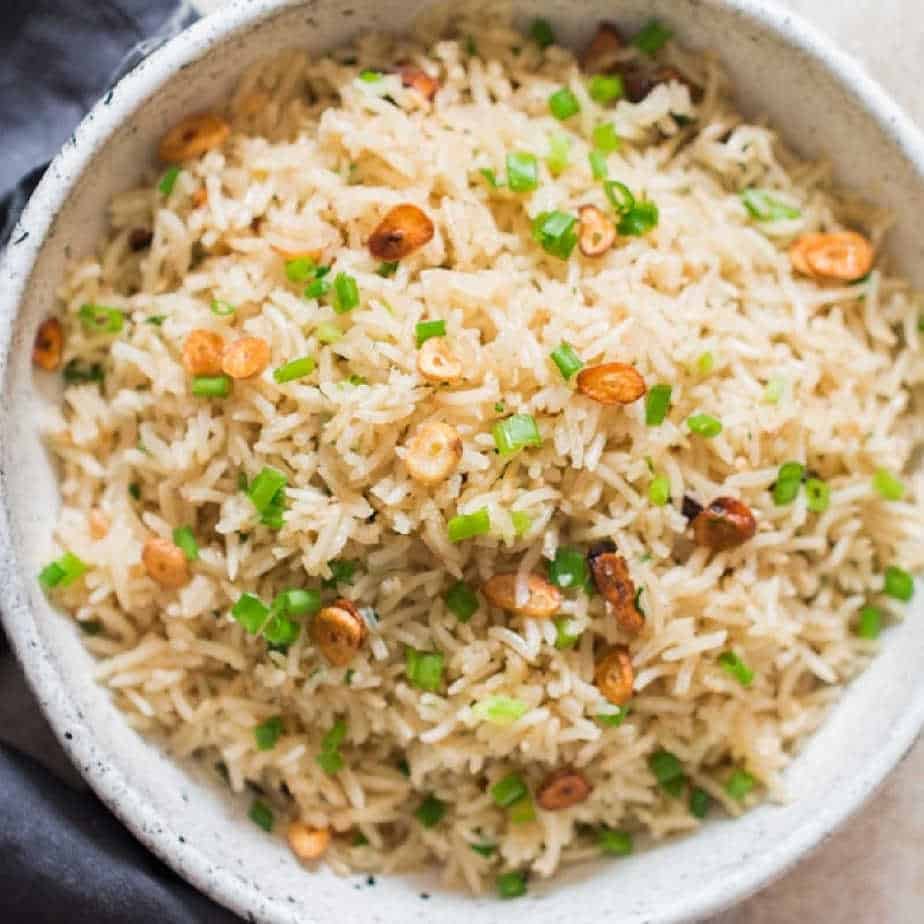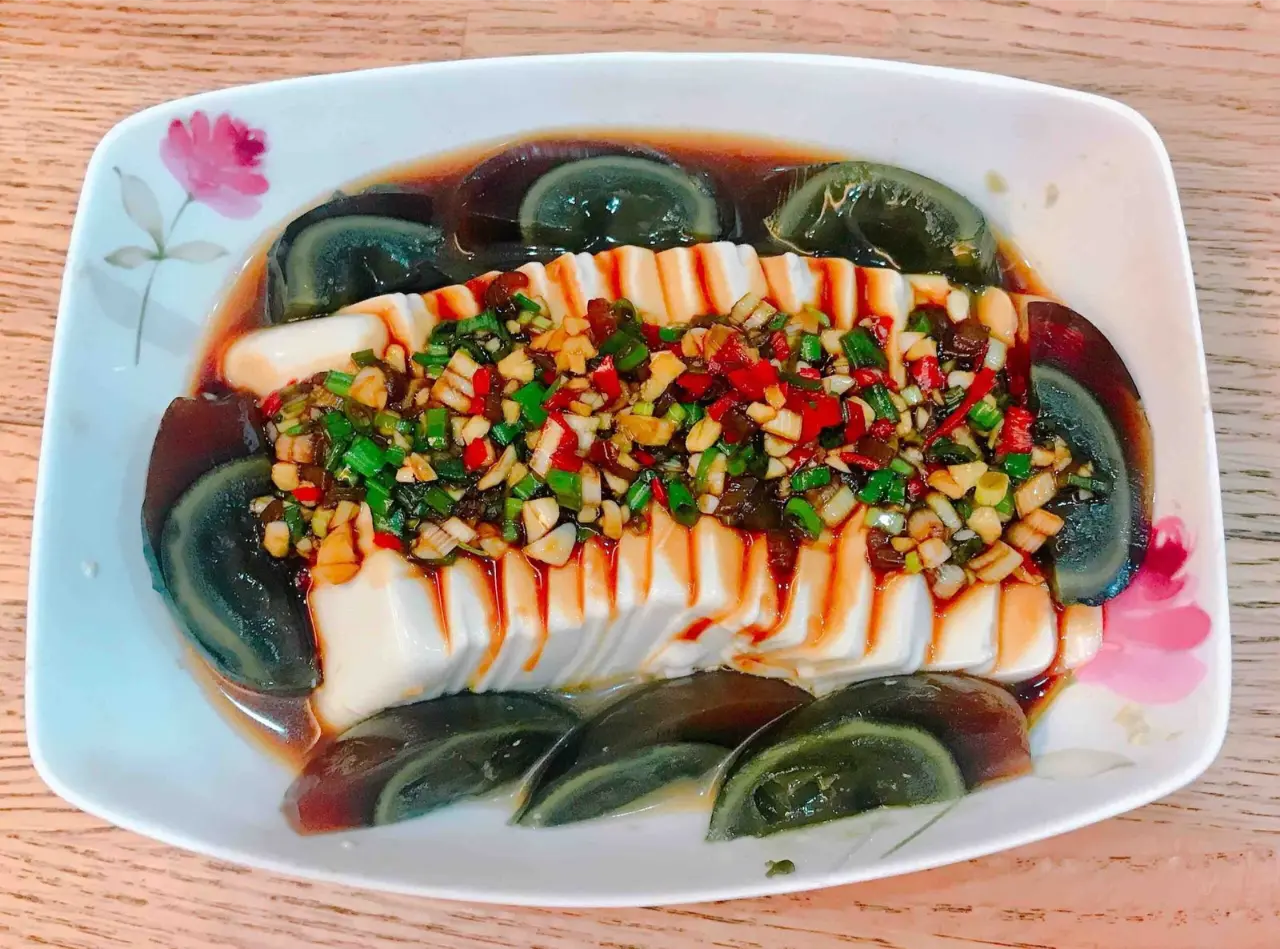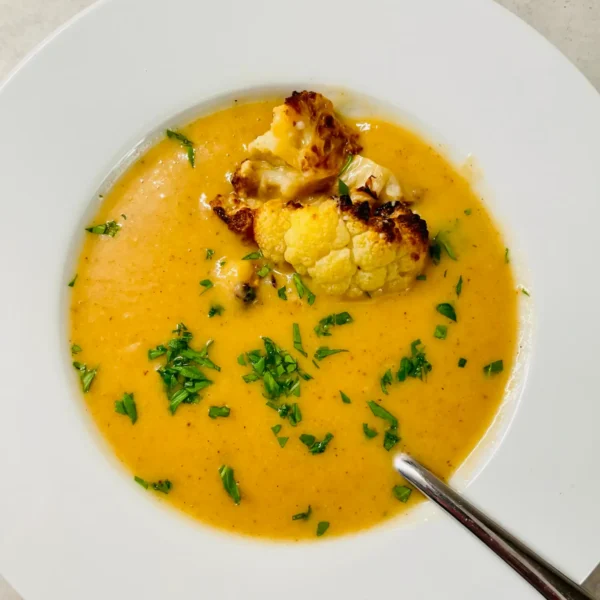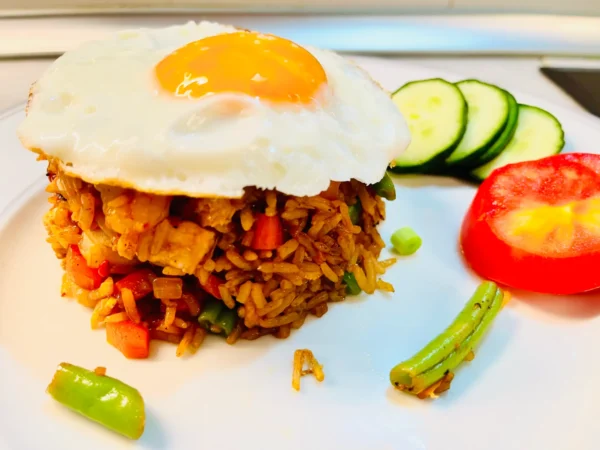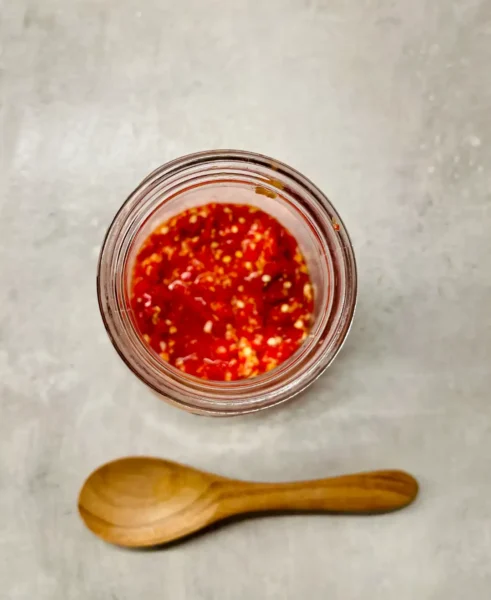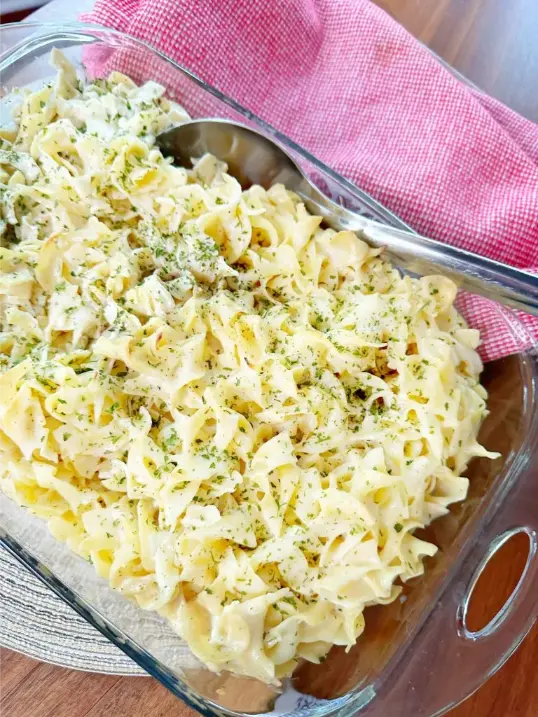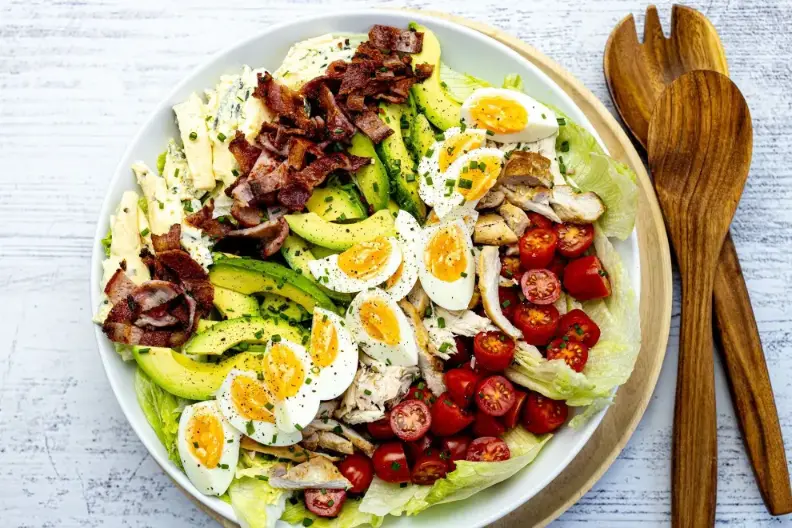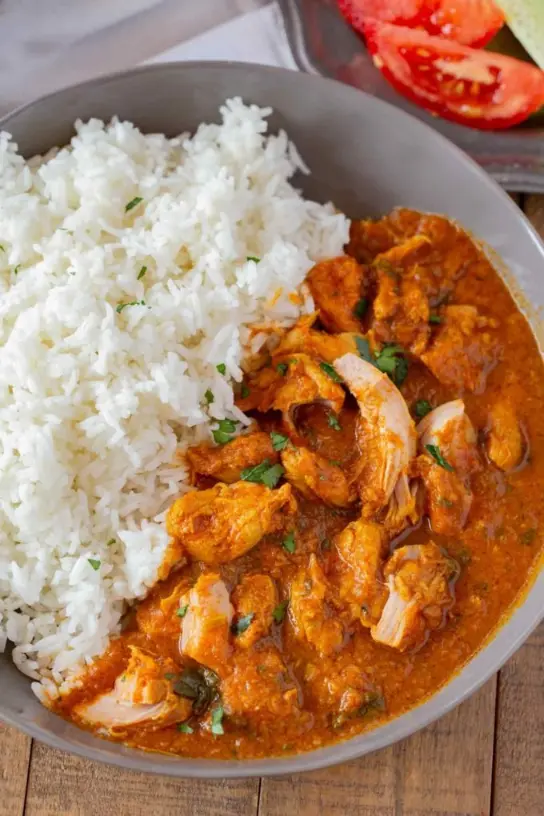Don’t tell anybody, but Chickpea Cauliflower Curry is a delicious vegan, vegetarian dish.
This dish is so flavorful that you would never guess how healthy it is. I am not a vegetarian, but if something tastes good, I eat it. The combination of the flavors and textures just works. You might want to make extra, because it tends to disappear quickly.
You can serve it over rice or with garlic naan bread for a satisfying meal. It also works well as a side dish or as a filling for wraps.
This chickpea cauliflower curry is a delicious and easy meal that you can make in less than 30 minutes. It’s vegan, gluten-free, and packed with protein and fiber.
The curry sauce is rich and creamy, thanks to coconut milk and tomato paste, and flavored with aromatic spices like cumin, coriander, turmeric, and garam masala. The chickpeas and cauliflower add texture, while the spinach and cilantro add freshness and color.
chickpea cauliflower curry Ingredients:
- Coconut oil
- Shallots, chopped
- Garlic, minced
- Fresh ginger, minced
- Serrano pepper, seeds removed &finely chopped
- Red or yellow curry paste
- Coconut milk + enough water to cover
- Ground turmeric
- Maple syrup or honey
- Soy sauce
- Cauliflower, chopped
- Chickpeas
- Sea salt
- Greens
- Cilantro
- Lime wedges
Why chickpea cauliflower curry works:

- This recipe is simple and quick, requiring only one pot and a few pantry staples.
- The curry sauce is versatile and customizable, allowing you to adjust the spice level and the consistency to your liking.
- The spinach and cilantro add a touch of green.
- This curry is vegan and gluten-free, making it suitable for various dietary preferences and needs.
Chickpea Cauliflower Curry Tips and Tricks:
- Use canned chickpeas and frozen cauliflower florets. Just rinse and drain the chickpeas, and thaw the cauliflower in the microwave before adding them to the pot.
- Blend some of the cauliflower and chickpeas with an immersion blender or a food processor, and then return it to the pot to make it thicker.
- Toast the spices in a dry skillet before adding them to the pot. This will enhance their aroma and taste.
- For more nutrition, you can add some other vegetables like carrots, potatoes, peas, or broccoli. You can also add some tofu, tempeh, or seitan for more protein.
- Serve it with some rice, quinoa, naan bread, or roti. You can also garnish it with some chopped peanuts, almonds, or cashews for some crunch.
1-Pot Yellow Chickpea Cauliflower Curry
Ingredients
- CURRY
- 2 Tbsp coconut oil
- 1/3 cup shallot chopped
- 4 cloves garlic minced
- 2 Tbsp fresh ginger minced
- 1 small serrano pepper seeds removed finely chopped
- 3-4 Tbsp red or yellow curry paste
- 2 cups coconut milk + enough water to cover
- 1 tsp ground turmeric
- 1 Tbsp maple syrup or honey plus more to taste
- 2 Tbsp soy sauce plus more to taste
- 1 cup cauliflower chopped
- 1 1/4 cup cooked chickpeas* rinsed and drained
- 1/2 tsp salt - to taste
- Greens
- Cilantro
- Lime wedges
Method
- In a large pot, heat some coconut oil over medium heat. Then, add the shallots and cook them for about 5 minutes, stirring occasionally. Next, add the garlic, ginger, and serrano pepper and sauté them for another 2-3 minutes, stirring frequently.
- Stir in the curry paste and let it cook for another two minutes. Then, pour in the coconut milk and add the turmeric, maple syrup or coconut sugar (if using), and tamari. Mix well and simmer over medium heat.
- Reduce the heat slightly after the mixture starts to simmer, then add the cauliflower and chickpeas. Keep the heat low enough to maintain a gentle simmer, not a boil. This should be around low to medium-low on the stove.
- Simmer the cauliflower and chickpeas with the curry for 10-12 minutes on low heat, stirring now and then, to make them tender and flavorful. Avoid boiling the mixture.
- Now is the time to fine-tune the taste of the broth. You can add more coconut sugar if you want it sweeter, more soy if you want it saltier, and more turmeric if you want it earthier. You can also increase the amount of curry paste for more heat and a stronger curry flavor. Be generous with the seasonings – this curry should have a lot of flavor.
- You can enjoy this dish on its own, or with some rice, quinoa, or greens of your choice (optional). Add some extra flavor and texture with toppings like sesame seeds, cilantro, lime, or diced red onion (optional).


